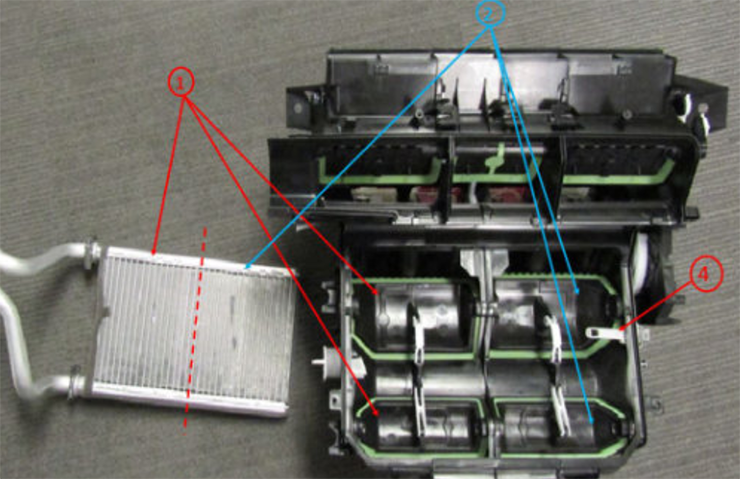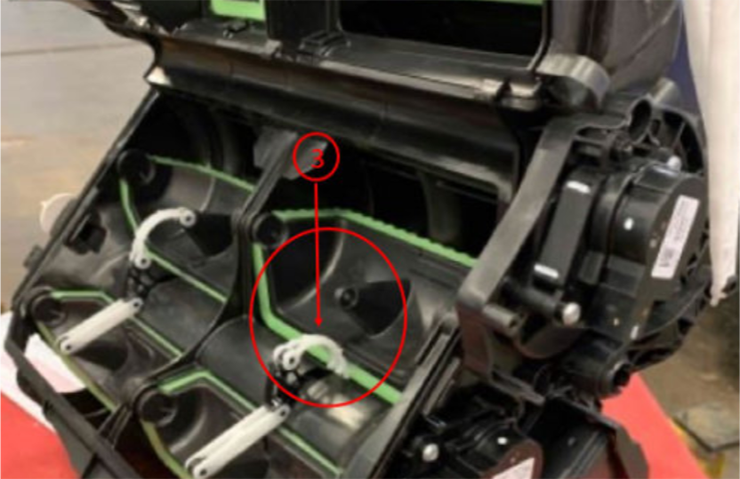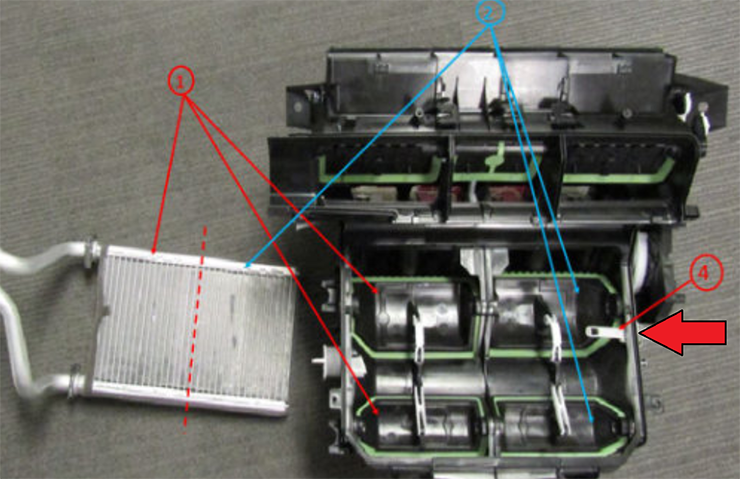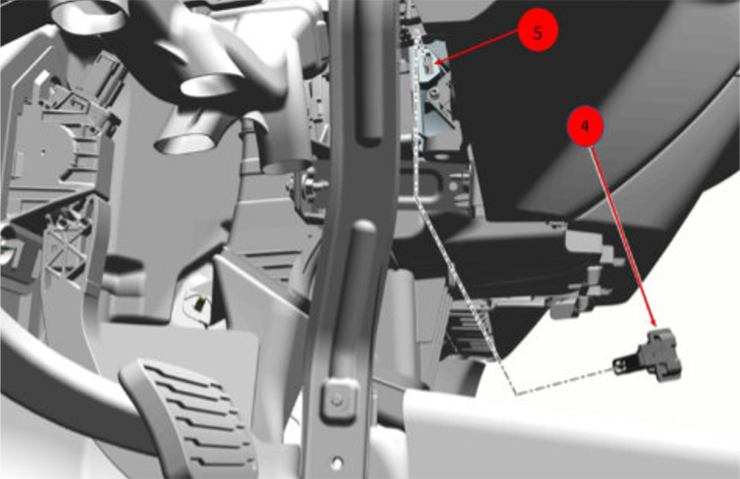There may be poor heater performance from the driver-side HVAC vents on some 2019-2021 Silverado and Sierra models and 2021 Tahoe, Suburban, Yukon and Escalade models. In some cases, the driver-side center instrument panel vent will have the lowest temperature.
There may be two possible causes for the poor performance:
- The heater core may have become plugged, which will affect the driver-side center vent first.
- The links that connect the driver-side temperature doors inside the HVAC case may have become disconnected.
Both single- and dual-zone HVAC cases have four temperature doors. There are two passenger-side temperature doors (Fig 12, #1) and two driver-side temperature doors (Fig. 12, #2).
 Fig. 12
Fig. 12
Inside the HVAC case, there are four white links that connect each of the four temperature doors. If one of these white links becomes disconnected (Fig. 13, #3), the doors will not operate properly.
 Fig. 13
Fig. 13
If diagnostics indicate that the poor heater performance may be due to an issue within the HVAC case, remove the Evaporator Air Temperature (EAT) sensor (Fig. 14, #4) from the HVAC case.
 Fig. 14
Fig. 14
Use a bore scope through the opening for the EAT sensor (Fig 15, #5) to inspect both driver-side temperature doors while changing the HVAC temperature setting from full cold to full hot, or manually rotate the driver-side temperature door shaft with the temperature actuator removed.
 Fig. 15
Fig. 15
If a temperature door is not moving properly, there may be an issue with one of the white links that connect a temperature door, a temperature door issue, or an actuator issue. Follow the diagnostics in the appropriate Service Information to determine the root case. It may be necessary to disassemble the HVAC case to identify the source of a door issue and to replace any parts.
If the temperature doors are moving through their full travel, check the performance of the system, including:
- Checking for a low coolant level in the surge tank bottle.
- Checking that the surge tank cap is properly installed and holds pressure.
- Checking for leaks in the system. Also check connections and confirm the rear heater operates correctly on SUV models.
Next, drain the coolant system. Look for any sludge in the radiator lines or if the coolant is liquid or sludge during the draining process.
Flush the coolant system to remove any contaminants, replace the heater core, and install new coolant using a 50/50 mix of the recommended coolant and clean, potable water. Confirm the system is leak-free and performance is normal.
For additional information, refer to #PIT5818.
– Thanks to Jim Will


















